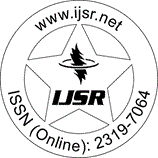Downloads: 117
Bangladesh | Applied Entomology and Zoology | Volume 8 Issue 6, June 2019 | Pages: 1873 - 1878
Contact Action of Spinosad on Callosobruchus chinensis (L.) in Three Successive Generations
Abstract: Stored product insect pest’s causes substantial economic and quality losses to stored pulses or cereals. Callosobruchus chinensis (L. ) is a major insect pest of stored pulses. The beetle infested lentil (Lens esculentus L. ) seeds in stored conditions and causes severe damages. Indiscriminate uses of insecticides or fumigants to control the beetle can cause health hazards to human being. This study explores development technology for use in control of C. chinensis which is eco-friendly and biodegradable. Spinosad influenced the progeny production, fertility, adult mortality and sex-ratio of C. chinensis in three successive generations. In the first generation, the concentration was increased (6.2×10-5ppm/µml), the progeny production rate was decreased (male 32.67 and female30.33). In the second and third generations the same was gradually decreased.
Keywords: Contact action, spinosad, Callosobruchus chinensis
How to Cite?: Tahera Tanjin Naher, W Islam, "Contact Action of Spinosad on Callosobruchus chinensis (L.) in Three Successive Generations", Volume 8 Issue 6, June 2019, International Journal of Science and Research (IJSR), Pages: 1873-1878, https://www.ijsr.net/getabstract.php?paperid=ART20198141, DOI: https://dx.doi.org/10.21275/ART20198141
